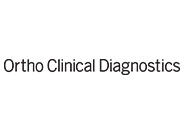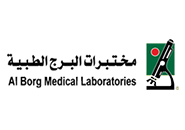The Broader View Of External Quality Assurance Of Pathology Testing
By Tony Badrick, Chief Executive, The Royal College of Pathologists of Australasia Quality Assurance Programs (RCPAQAP) , 3 May 2017
External quality assessment (EQA) is the challenge of the effectiveness of a laboratory's quality management system, which is a collection of business processes focused on consistently meeting customer requirements and enhancing their satisfaction. The primary customers of the laboratory are the referring clinicians and their patients, although there are many other stakeholders. This is a broad definition, yet laboratories tend to be focused on very narrow concepts of EQA, even though the significance of pre and post laboratory errors is now recognized. This can be partly attributed to the fact that laboratories are largely sample, as opposed to patient, oriented.
If it is assumed that the broader concept of EQA is primarily aimed at meeting customer requirements and enhancing customer satisfaction, then it is clear that the quality of the product of a laboratory is taken as a given by referrers, and enhancing clinician, patient and payer satisfaction extends far beyond the traditional boundaries of the laboratory. As a result, the current range of laboratory based EQA programs requires to be extended to the requesting and reporting phases, which are outside the current scope of pre-analytical, analytical and post-analytical EQA programs. The pre-pre-analytical phase, which is primarily composed of test ordering, and the post-post-analytical phase, which is primarily composed of test result interpretation, will be known as the diagnostic phases and be sub-divided into pre-laboratory and post-laboratory phases. This terminology has been chosen to remove the laboratory as the focus of the process and shift the focus back to the referring clinician.
A study conducted by the American Academy of Family Physicians reported that participants submitted 590 event reports with 966 pre and post laboratory errors. Pre laboratory errors occurred in ordering tests (12.9%) and implementing tests (17.9%), while post laboratory errors occurred in reporting results to clinicians (24.6%), clinicians responding to results (6.6%), notifying patient of results (6.8%), general administration (17.6%), communication (5.7%) and other categories (7.8%). Charting or filing errors alone accounted for 14.5% of errors. While patients were unharmed in 54% of events; 18% resulted in some harm, and harm status was unknown for 28%. Furthermore, these errors led to a range of other adverse consequences including time lost and financial consequences (22%), delays in care (24%), pain/suffering (11%) and adverse clinical consequence (2%).Therefore, the impact of these pre and post laboratory errors demonstrates a pressing need to identify the sources of these errors to enable the development of interventions that can reduce the error rate.
Pre-laboratory errors
While there has been a vast amount of research to identify pre-laboratory error quality indicators, there are also significant pre-laboratory errors that have not been included in these indicators. One of these areas of omission is the proportion of patients who are not adherent to a pathology request. It has been estimated that approximately 20-30% of patients who are given a pathology request form in the community do not have this request completed. There are multiple reasons for this non-compliance including language barriers in communication, low socioeconomic status and poor health literacy such as forgetting important appointments, losing pathology forms and not showing up to or attempting to reschedule the appointment. This has potentially far greater impact on patient treatment than the analytical phase.
The impact of this non-compliance has required community General Practitioners to adopt complex workflows to remind patients of the need to have an appropriate test before the next appointment. Anecdotally, the non-adherence rates are of a similar range in hospital outpatient clinics. The cost to the community of these wasted appointments is significant. This is one reason why Point of Care Testing, which enables laboratory tests to be performed at the patient location as opposed to a laboratory, may have significant benefits for laboratory clients.
Hickner et al. reported that GPs described uncertainty in ordering laboratory medicine tests in approximately 15% of diagnostic encounters. The task of selecting the appropriate diagnostic testing is challenging for clinicians, in part because of the sheer volume of choices. For example, there are currently over 850 different pathology tests for which the government will reimburse patients in Australia. Therefore, methods to improve this workflow could lead to a significant improvement in the quality of pathology services.
Post-laboratory errors
Sikaris has identified the importance of the post-laboratory phase and how it is subject to error such as the misapplication of appropriate and accurate test results through cognitive failure. Laboratory tests and their misinterpretation are an important contributor to misdiagnosis because of the emphasis put on laboratory testing for diagnosis and monitoring decisions. In the post-laboratory phase the quality of the final report including its reference intervals, clinical interpretations and notifications based on knowledge from laboratory specialists, should support clinical decision-making. It has been reported that incorrect interpretation of diagnostic tests has been estimated as accounting for 37% of malpractice claims in primary care and emergency departments.
A major component of post-laboratory error is incorrect result interpretation. found that 22% of Norwegian General Practitioners (GPs) misclassified changes in Haemoglobin A1C (HbA1C) for patients with Diabetes Mellitus (DM) and that the vast majority of GPs assumed that analytical quality was better than it really was. The finding of this study are supported by that of Thue and Sandberg, who analysed clinician expectation of analytical performance in relation to current analytical performance specifications, finding that clinicians are generally uninformed of the capability of analytical performance. Three subsequent Norwegian studies performed EQA of GPs' interpretation of pathology results and showed general agreement in Critical Differences (CDs) for BG and HbA1C , with variation in the perceived risk to patients of a severe bleed. Kristoffersen et al,found that GPs across 13 countries overestimated the risk of ischemic stroke and bleeding in people treated with vitamin K antagonists (VKA) by 2-3 times. The results of these studies suggest that guidelines for these conditions may be either unknown or impractical. This is further supported by Hellemons et al, who found that guidelines around the use and interpretation of albuminuria in patients with DM were poorly followed in general practice.
For pathology services to be of value, the correct ordering and interpretation of results is crucial. Both of these factors are the responsibility of the treating clinician, and as such, can be considered as the pre and post-laboratory phase. Errors occur throughout the testing process, most commonly involving test implementation and reporting results to clinicians. While significant physical harm caused by these errors is rare, adverse consequences for patients is common.

































